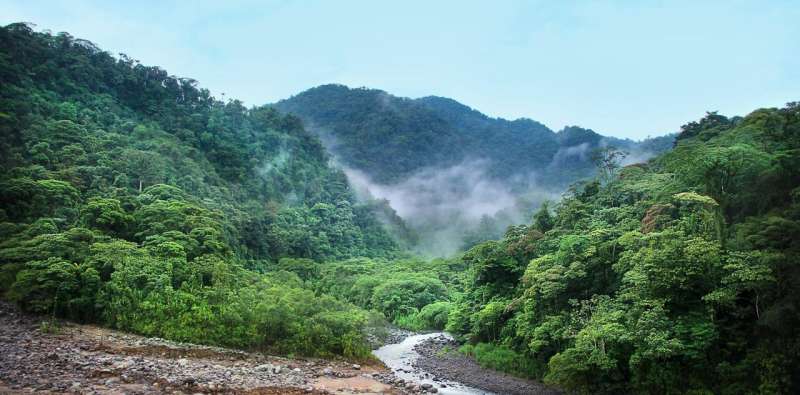This article has been reviewed according to Science X's editorial process and policies. Editors have highlighted the following attributes while ensuring the content's credibility:
fact-checked
peer-reviewed publication
trusted source
proofread
New method helps to study diurnal variation of leaf stomatal response of tropical trees

The unified stomatal optimization (USO) series models have shown obvious biases in predicting stomatal conductance (gsw) of tropical rainforest trees, especially under low vapor pressure deficit (VPD) and irradiance conditions. However, few studies have focused on the structural problems of the USO series models themselves.
In a study published in Agricultural and Forest Meteorology, researchers from the Xishuangbanna Tropical Botanical Garden (XTBG) of the Chinese Academy of Sciences and their collaborators presented a new method combining the Farquhar photosynthesis model and the random forest algorithm to investigate the diurnal variation of stomatal responses in leaves of six tropical tree species in southern China.
The researchers conducted experiments on sunlit leaves of six tropical tree species at XTBG during the dry seasons of 2021 and 2023. They developed a new coupled interface for the Farquhar photosynthesis model and the stomatal conductance model.
Instead of using Ball–Berry–Leuning, USO and its derivative, they used a data-driven random forest algorithm trained with extensive diurnal gas exchange and micrometeorological data.
The results showed that the USO model and its derivative significantly overestimated gsw when VPD and radiation intensity were low. This overestimation was mainly attributed to the assumption of a linear relationship between gsw and net assimilation rate (An), and the problem of unbounded gsw at low VPD.
Due to the negative correlation between intracellular:atmospheric CO2 concentration ratio (Ci/Ca) and irradiance, the relationship between gsw and An is actually nonlinear.
The relationship between intracellular:atmospheric CO2 concentration ratio (Ci/Ca) and irradiance indicates that Ci/Ca is higher at lower irradiance and decreases and stabilizes at higher irradiance.
Based on this finding, an empirical coefficient was determined to represent gsw as a finite value at low VPD using a monthly average value of minimum VPD during the day.
"The revised model significantly improved the prediction accuracy of gsw at low VPD while maintaining the responsiveness of gsw at high VPD," said Zhang Jiaolin of XTBG.
More information: Wei Xue et al, An improved representative of stomatal models for predicting diurnal stomatal conductance at low irradiance and vapor pressure deficit in tropical rainforest trees, Agricultural and Forest Meteorology (2024). DOI: 10.1016/j.agrformet.2024.110098
Journal information: Agricultural and Forest Meteorology
Provided by Chinese Academy of Sciences



















